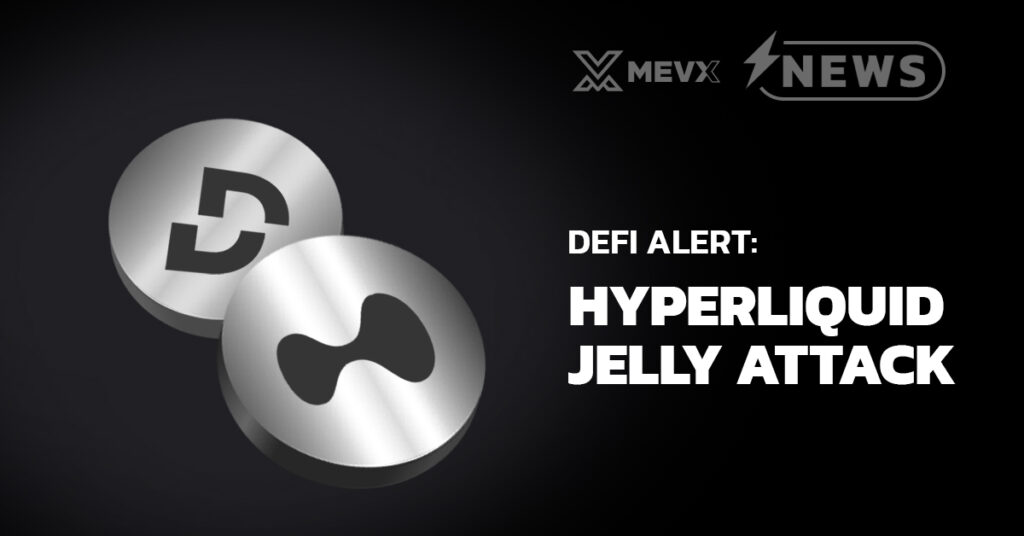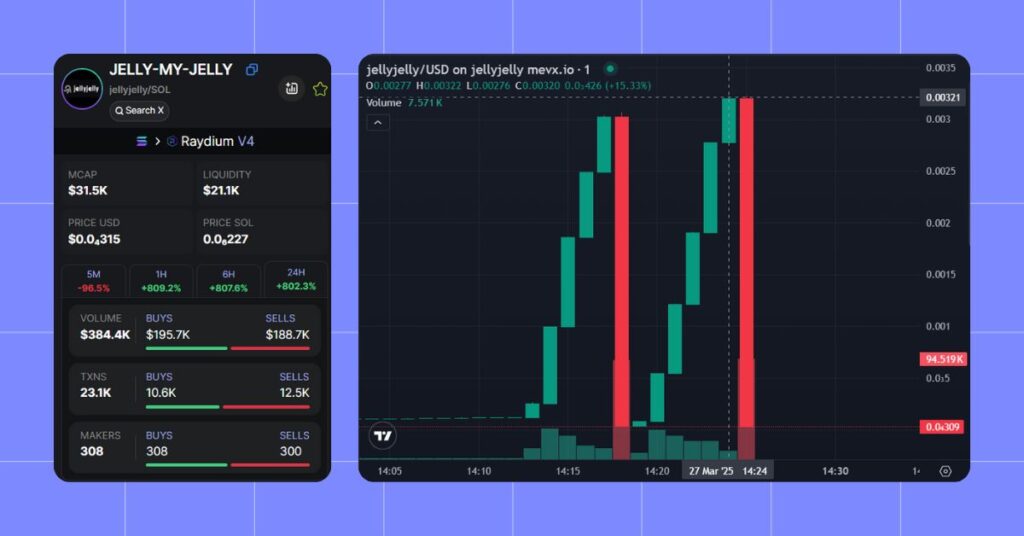On March 26, 2025, Hyperliquid Jelly Attack. A leading decentralized perpetual futures exchange faced a sophisticated market manipulation attack involving the $JELLY token.

A trader (wallet 0xde95) opened an $8M short position on $JELLY, deliberately triggered liquidation, and forced Hyperliquid’s liquidity pool (HLP) to absorb a $4.5M short position.
The trader then pumped $JELLY price on-chain, inflating its market cap from $10-20M to over $50M in under an hour, causing a $12M unrealized loss for HLP. Another wallet (0x20e8) capitalized on the chaos, earning $8.2M in profits from a long position.
The Fallout
- Binance and OKX listed $JELLY futures, amplifying volatility and pressure on Hyperliquid.
- HLP faced the risk of complete liquidation if $JELLY’s market cap hit $150M.

Hyperliquid’s Response
- Delisted $JELLY perpetual futures.
- Adjusted the Oracle price to $0.0095 per $JELLY, closing all positions.
- Compensated all users (except flagged wallets) via the Hyper Foundation.
- Turned a potential $12M loss into a $703K profit, with HLP depositors earning a $687K daily profit.
Hyperliquid JELLY Attack – Key Takeaways
- Vulnerabilities Exposed: The incident highlights risks in DeFi, including oracle pricing, liquidity pools, and forced liquidations.
- Governance Debate: Hyperliquid’s centralized oracle adjustment sparked controversy over decentralization.
- Lessons for DeFi: Platforms need stronger oracles, transparent governance, and real-time monitoring to prevent manipulation.
Why It Matters
Hyperliquid $JELLY Attack underscores the fragility of decentralized exchanges when dealing with low-liquidity tokens. It’s a wake-up call for DeFi platforms to bolster security and for users to approach DeFi with caution.
Follow our blog for the latest updates! Have thoughts on this incident? Reply to this newsletter, we’d love to hear from you!
Share on Social Media:
